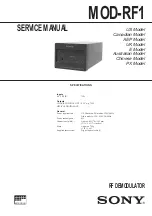
46 Section 3: Basic Financial Functions
File name: HP 12c Pt Converted_user's guide_English_HDP0F123E02_080207
Page: 11 of 281
Printed Date:
{
2007/8/2Dimension: 14.8 cm x 21 cm
z
FV
— the
future value
— is the final cash flow or the compounded value of a
series of prior cash flows. In the particular problem illustrated above,
FV
is
unknown (but can be calculated).
Solving the problem is now basically a matter of keying in the quantities identified
in the cash flow diagram using the corresponding keys, and then calculating the
unknown quantity by pressing the corresponding key. In the particular problem
illustrated in the cash flow diagram above,
FV
is the unknown quantity; but in other
problems, as we shall see later,
n
,
i
,
PV
, or
PMT
could be the unknown quantity.
Likewise, in the particular problem illustrated above there are four known
quantities that must be entered into the calculator before solving for the unknown
quantity; but in other problems only three quantities may be known — which must
always include
n
or
i
.
The Cash Flow Sign Convention
When entering the
PV
,
PMT
, and
FV
cash flows, the quantities must be keyed into
the calculator with the proper sign, + (plus) or – (minus), in accordance with …
The Cash Flow Sign Convention:
Money received (arrow pointing up)
is entered or displayed as a positive value (+). Money paid out (arrow
pointing down) is entered or displayed as a negative value (–).
The Payment Mode
One more bit of information must be specified before you can solve a problem
involving periodic payments. Such payments can be made either at the beginning
of a compounding period (payments in advance, or annuities due) or at the end of
the period (payments in arrears, or ordinary annuities). Calculations involving
payments in advance yield different results than calculations involving payments in
arrears. Illustrated below are portions of cash flow diagrams showing payments in
advance (Begin) and payments in arrears (End). In the problem illustrated in the
cash flow diagram above, payments are made in arrears.
Regardless of whether payments are made in advance or in arrears, the number of
payments must be the same as the number of compounding periods.
To specify the payment mode:
z
Press
g×
if payments are made at the beginning of the compounding
periods.
z
Press
gÂ
if payments are made at the end of the compounding periods.
Summary of Contents for 12C
Page 1: ...HP 12c Platinum Financial Calculator User s guide H Edition 5 HP part number F2231AA 90001 ...
Page 15: ...Part I Problem Solving ...
Page 48: ...48 Section 3 Basic Financial Functions ...
Page 104: ......
Page 105: ...Part II Programming ...
Page 156: ......
Page 157: ...Part III Solutions ...
Page 230: ......
Page 231: ...Appendices ...
Page 277: ......
















































